SUPPLEMENTS
Insights archive

Quantitative genetics Free access
Vol. 456, No. 7223 (11 December 2008)
Produced with support from Monsanto
Recent revolutions in genomic technologies have led to a renewed interest in quantitative genetics. One of the main areas of study is the genetic basis of complex traits, which proved difficult to investigate until the advent of genome-wide association (GWA) studies. Findings from a wide variety of organisms — from plants to mice to humans — are now markedly improving our understanding of how genotype contributes to phenotype.

Neuropsychiatric disease Free access
Vol. 455, No. 7215 (16 October 2008)
Produced with an educational grant provided by Eli Lilly & Company
Neuropsychiatric diseases, such as schizophrenia, depression and autism, are a huge burden on society, impairing the health of those affected, as well as their ability to learn and to work. After half a century of concerted effort, researchers are now making progress towards defining the biological basis of these diseases. Technological advances in the areas of genomics and large-scale studies, as well as the development of new animal models, are improving our understanding of these diseases and are offering the prospect of fundamentally different options for treatment.

Small-molecule catalysis
Vol. 455, No. 7211 (18 September 2008)
Small-molecule catalysts are vital for countless chemical reactions. The development of these catalysts, which include transition-metal complexes and small organic molecules, is being stimulated by insights into the mechanisms of existing small-molecule catalysts, by advances in computational chemistry, and by inspiration drawn from enzymes and from the challenges of making natural products.

Inflammation
Vol. 454, No. 7203 (24 July 2008)
Inflammation forms the basis of many physiological and pathological processes. Much is known about how inflammation is initiated, develops and resolves over the short term. But less is known about the causes and consequences of chronic inflammation, which underlies many human diseases. Recent studies have extended our understanding of chronic inflammation and the cross-talk that occurs between inflammatory responses and other physiological and pathological responses.

Quantum coherence
Vol. 453, No. 7198 (19 June 2008)
Produced with support from QinetiQ
Improvements in techniques to manipulate light and matter are facilitating exciting applications of quantum mechanics. Scientists from diverse areas of research are now seeking to harness and exploit quantum coherence and entanglement for quantum simulations and quantum information processing.

Regenerative medicine
Vol. 453, No. 7193 (15 May 2008)
The capacity of most tissues to regenerate derives from stem cells, but there are many barriers to the use of stem-cell-based therapies in the clinic. Such therapies, however, have the potential to improve human health enormously, and knowledge gained from studying cells in culture and in model organisms is now laying the groundwork for a new era of regenerative medicine.

Molecular cancer diagnostics
Vol. 452, No. 7187 (03 April 2008)
Produced with support from Nestlé Research Center
The technological advances of the past decade have helped researchers to characterize the molecular basis of cancer. With this knowledge, drugs targeted at specific molecules have been designed. New diagnostics, or biomarkers, for cancer are now urgently needed to determine which of these new drugs a patient is most likely to benefit from.

Cardiovascular disease
Vol. 451, No. 7181 (21 February 2008)
Produced with support from Schering-Plough
Cardiovascular disease is the most common cause of death worldwide and will become even more prevalent as the population ages. New therapeutic targets are being identified as a result of emerging insights into disease mechanisms, and new strategies are also being tested, possibly leading to new treatment options. Improving diagnosis is also crucial, because by detecting disease early, the focus could be shifted from treatment to prevention.

Proteins to proteomes
Vol. 450, No. 7172 (13 December 2007)
Produced with support from Pfizer
Proteins are the most diverse and versatile set of biological macromolecules, having crucial roles in all biological processes. Now that researchers have identified whole complements of proteins (proteomes) for many cell types, they are pushing the frontiers of protein science: from the regulation and function of single protein dynamics to the evolution and inhibition of protein-protein interactions.

Host–microbe interactions
Vol. 449, No. 7164 (18 October 2007)
Produced with support from Pfizer
Interactions between symbiotic or pathogenic microbes and the hosts they colonize are central to both health and disease. This rapidly advancing field is now bearing the fruits of interdisciplinary efforts by microbiologists, immunologists, cell biologists, geneticists and ecologists.

The Large Hadron Collider
Vol. 448, No. 7151 (19 July 2007)
In 2008, the Large Hadron Collider (LHC) will come into operation at CERN, near Geneva, Switzerland. The highest-energy accelerator ever built, it heralds a new era in particle-physics research, in which we hope to complete the standard model and even go beyond, into a new realm of physics.

DNA replication and repair
Vol. 447, No. 7147 (21 June 2007)
Organisms need to preserve genetic information to prevent the detrimental effects of ageing and disease. This is achieved by accurate replication of DNA and by repair of any damage incurred as a consequence of endogenous or exogenous factors. Researchers are now uncovering exciting details about DNA replication and repair. These processes are proving to be highly interconnected, and new insights could lead to treatments for various diseases and age–related disorders.

Epigenetics
Vol. 447, No. 7143 (24 May 2007)
Supported in part by Invitrogen and March of Dimes
Genetic mechanisms alone cannot explain how some cellular traits are propagated. Rapid advances in the field of epigenetics are now revealing a molecular basis for how heritable information other than DNA sequence can influence gene function. These advances also add to our understanding of transcriptional regulation, nuclear organization, development and disease.

Glycochemistry & Glycobiology
Vol. 446, No. 7139 (26 April 2007)
Produced with support from Vastox and Dextra Laboratories
The importance of carbohydrates in biological processes has long been underappreciated. Armed with new tools for synthesizing, modifying and studying oligosaccharides and glycoconjugates, our understanding of these biomolecules is rapidly improving. This knowledge is also yielding promising candidates for carbohydrate-based diagnostics, drugs and vaccines.

Skin Biology
Vol. 445, No. 7130 (21 February 2007)
Produced with support from Johnson & Johnson Consumer Companies, Inc.
Skin is the largest organ of the body and performs many functions. It helps us sense our surroundings and provides a barrier to environmental insults. Greater understanding of the mechanisms of skin development and the molecular interactions within and between skin cells and other cell types is leading to new therapeutics and laboratory-engineered skin with which to treat skin disease and injury.

Obesity and Diabetes
Vol. 444, No. 7121 (14 December 2006)
Produced with support from Nestlé Research Center
The incidence of obesity and type 2 diabetes are increasing rapidly, threatening health worldwide. The prevalence of metabolic syndrome, an obesity-related condition and risk factor for type 2 diabetes and cardiovascular disease, is also increasing. Greater understanding of the processes involved in these disorders is therefore urgently required, as are new treatment options.

Chemical Sensing
Vol. 444, No. 7117 (16 November 2006)
Recent work has illuminated the principles by which the taste and olfactory systems decode and represent environmental stimuli. Continued work in this field promises to explain how taste and smell contribute so richly to our experience of the world, and should also help to tackle serious practical problems, such as the control of disease-bearing insects.

Neurodegeneration
Vol. 443, No. 7113 (19 October 2006)
The prevalence of neurodegenerative disorders such as Alzheimer′s disease and Parkinson′s disease is increasing, but effective treatments are lacking. Researchers have revealed many parallels among this diverse group of disorders, including protein aggregation and mitochondrial dysfunction. It is hoped that greater understanding of these processes and their role in disease will lead to new treatments.

Lab on a chip
Vol. 442, No. 7101 (27 July 2006)
Supported by Agilent Technologies
The ability to perform experiments on small scales using miniaturized (lab-on-a-chip) devices has many benefits, and highly integrated and compact labs on chips with exciting functionality have been developed despite the engineering challenges involved. This Insight highlights recent advances in the application of microfluidic-chip-based technologies such as chemical synthesis, the study of cellular metabolism and medical diagnostics.

Stem Cells
Vol. 441, No. 7097 (28 June 2006)
Supported by Invitrogen
In recent years, stem cells have been the subject of considerable excitement. Great progress has been made in understanding their mechanisms and unravelling their potential for therapeutic application. Widespread use of stem-cell-based therapies is still a long way off, but could one day benefit vast numbers of patients, including those with cancer, neurodegenerative disorders and heart disease. Podcast

Signalling in cancer
Vol. 441, No. 7092 (25 May 2006)
Supported by Pfizer and Genentech
Thirty years of oncogene research have provided fascinating insights into the molecular basis of cancer. Many hurdles remain in the race to beat cancer, but as the articles in this Insight show, a growing understanding of the complex signalling pathways that underlie tumour formation and progression is driving the development of a new generation of anticancer drugs targeted at specific molecular events.

Early universe
Vol. 440, No. 7088 (27 April 2006)
We can now see many galaxies as they were within the first billion years after the Big Bang, and we have moved to a model of cosmology in which a mysterious 'dark energy' is the main component of the Universe. Bold new theories and a range of ground- and space-based instruments promise to provide further insights into the formation and evolution of our Universe.
To highlight recent advances, Nature has commissioned a diverse group of people to write about their subjects and how they are developing our understanding of the Universe.

Ion channels
Vol. 440, No. 7083 (23 March 2006)
Ion channels are essential for cellular existence, and mutations and other disruptions have serious, sometimes life-threatening consequences. Until recently, the way these channels operated was something of a mystery. But now high-resolution structural studies are revealing the secrets of these membrane proteins. Although treatments for diseases caused by faulty channels are a long way off, according to this Nature Insight, we are heading in the right direction.

Angiogenesis
Vol. 438, No. 7070 (15 December 2005)
Supported by Genentech, The NIH and JDRF
If laid end to end, the vessels from a typical adult would circle the Earth twice. Little surprise then, that the process of growing new blood vessels - angiogenesis - is a fundamental biological mechanism that can result in serious disease when it goes wrong. More than US$4billion has been invested in the research and development of new drugs to promote or inhibit angiogenesis, making it one of the most heavily funded areas of medical research today.
This Nature Insight describes many of the physiological processes and introduces exciting applications that have recently been made available.

Membrane biology
Vol. 438, No. 7068 (01 December 2005)
Supported in part by Avanti Polar Lipids
Biological membranes are more complex than was first thought when the 'fluid mosaic model' was first proposed in 1972. The wealth of new data on membrane protein structures is revolutionising our understanding of membrane architecture and the principles that govern protein folding.
From membrane protein biophysics to the cell biology of membrane processes, this Nature Insight introduces the most exciting research in this field. Nature carries sole responsibility for all editorial production.

Sleep
Vol. 437, No. 7063 (27 October 2005)
Produced with support from National Institutes of Health
It is often true in biology that things are more complex than they first seem, and this is especially accurate for sleep: what is sleep, what are its mechanisms and what is it for? The discovery of Rapid Eye Movement (REM) sleep - an excited state characterised by intense brain activity and vivid dreaming - tells us sleep is not just for rest.
With so many unanswered questions, sleep research is an exciting field to follow. In this Insight, Nature highlights a diverse collection of articles ranging from how sleep affects our understanding of consciousness to the consolidation of our memories. Supported by the National Institutes of Health. As always, Nature carries sole responsibility for all editorial content.

Surfaces and interfaces
Vol. 437, No. 7059 (29 September 2005)
Produced with support from Unilever
The importance of surfaces and interfaces cannot be overstated, with their reach extending from the hardware of the digital age to the processes of life. The past half-century has seen the development of a varied toolkit for characterizing them which is providing a powerful platform for scientific research and manufacturing technology.
In this Insight, Nature brings together literature demonstrating that the investigation of surfaces and interfaces has moved to the forefront of an increasing number of fascinating fundamental scientific enquiries.

Bio-Oceanography
Vol. 437, No. 7057 (15 September 2005)
Two-thirds of our planet's surface is covered in water, yet the global importance of the oceans is only just becoming apparent. Marine microbes, for example, are responsible for half of the Earth's primary productivity and play a fundamental role in regulating world climate. In this Insight, Nature presents articles on marine microorganisms, ecosystems and global nutrient cycles that have furthered our understanding of biological processes in the oceans and may be critical to comprehending global nutrient cycles in a time of rapid environmental change.

Hepatitis C
Vol. 436, No. 7053 (18 August 2005)
Produced with support from Vertex Pharmaceuticals Incorporated and Gilead Sciences
More than 170 million people are infected with the Hepatitis C virus. Most infections are chronic, incurable, and hundreds of thousands of people die each year of cirrhosis, liver failure and cancer. But progress has been made in the 15 years since the virus was discovered. In this Insight, Nature brings together leading experts to review advances in the field of Hepatitis C research.

Autoimmunity
Vol. 435, No. 7042 (2 June 2005)
Produced with support from Wyeth
The concept of autoimmunity was first predicted by Nobel Laureate Paul Ehrlich at the start of the twentieth century, and he described it as 'horror autotoxicus'. His experiments led him to conclude that the immune system is normally focused on responding to foreign materials and has an inbuilt tendency to avoid attacking self tissues. But when this process goes wrong, the immune system can attack self tissues resulting in autoimmune disease. The perplexing issue of what allows the immune system to attack self tissues is a continuing focus of research, as the following collection of reviews demonstrates.
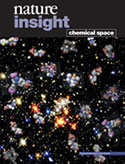
Chemical space and biology
Vol. 432, No. 7019 (16 December 2004)
Produced with support from Aventis
"Space", as Douglas Adams famously said, "is big. You just won't believe how vastly, hugely, mind-bogglingly big it is." Change 'space' to 'chemical space', and his statement has similar resonance: the total number of possible small organic molecules that populate 'chemical space' has been estimated to exceed 1060 — an amount so vast when compared to the number of such molecules we have made, or indeed could ever hope to make, that it might as well be infinite. So, it is not surprising that our exploration of chemical space has so far been extremely limited.
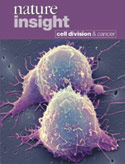
Cell division and cancer
Vol. 432, No. 7015 (18 November 2004)
Produced with support from AstraZeneca
The development of cancer can be viewed as an evolutionary process. Cells are constantly subject to mutations in their DNA which are usually detrimental to the cell. But occasionally these changes produce cells that can escape the normal constraints and flourish as pathological tumours.
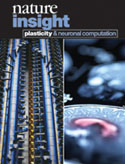
Plasticity & neuronal computation
Vol. 431, No. 7010 (14 October 2004)
If you read these words from Marvin Minsky: "minds are what brains do" and "doing means changing", your brain's fine structure may be durably altered. Such is neuronal plasticity, a concept that has found a home in many areas of neuroscience, from brain repair to learning and memory. But plasticity is not only a reaction to change; it is also a source of change. This Insight considers plasticity as the critical engine of neuronal computation.

RNA Interference
Vol. 431, No. 7006 (16 September 2004)
Produced with support from Merck & Co., Inc. and Alnylam Pharmaceuticals Inc.
The most familiar role for RNA is as a relatively passive intermediary in the translation of information from genes into proteins. But other functions for this versatile molecule have been emerging. This Insight explores the surprising recent discovery that RNA can actively regulate gene expression.
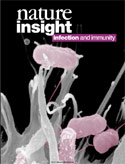
Infection and Immunity
Vol. 429, No. 6996 (8 July 2004)
Infectious diseases remain a serious medical burden in both developing and industrialized countries. The emergence of new diseases such as HIV/AIDS and severe acute respiratory syndrome (SARS), the resurgence of known diseases such as West Nile disease and multidrugresistant tuberculosis, and the threat of deliberately developed man-made infections are cause for concern. When vaccines or effective treatments are not available, we rely on the immune system to clear the host of infectious agents and disease. A better understanding of the tactics used by pathogens and of the immune system's defensive armoury is needed to pave the way for improved strategies of prevention and therapy. The four articles in this Insight provide a snapshot of the issue, addressing in turn the nature and spread of emerging and re-emerging infectious diseases, the assault strategies used by major pathogens, the immediate innate immune response, and the antigen-specific acquired (or adaptive) immune response, which is the host's second line of defence.
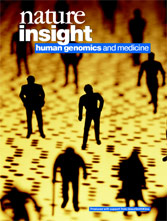
Human genomics and medicine
Vol. 429, No. 6990 (27 May 2004)
Produced with support from GlaxoSmithKline
ast year the official completion of the human genome sequence was announced, capping years of hard work. Now that the flashbulbs have dimmed, scientists are taking a hard look at the results. Benefits of the sequence were prophesied to include 'magic bullet' therapeutics, individualized medicine, and the prediction of disease long before symptoms surface. But to realize these breakthroughs, we must fashion the four-letter code we all share into tools physicians can use, and ensure that these tools are readily available. Although one graduate student can now make huge strides with access to the Internet and basic molecular biology equipment, true success may demand nothing short of entirely new methods of clinical study and reorganization of existing academic structures.

Protein misfolding
Vol. 426, No. 6968 (18/25 December 2003)
Produced with support from Aventis
At school it all sounded so simple — transcription turns DNA into RNA, and translation of RNA gives you protein. But the often forgotten third step in this process, the folding of the translated linear strand of amino acids into a fully functional three-dimensional protein, is one of the most complex challenges facing the cellular protein factory.

Hydrocarbon reservoirs
Vol. 426, No. 6964 (20 November 2003)
The importance of fossil fuels to human society cannot be overstated. Naturally formed reservoirs of hydrocarbons occur in a variety of geological contexts (most notably as oil and gas) and are exploited to satisfy the majority of our energy needs. Such resources are finite, yet the demand for fossil fuels is growing as the industrialization of the world continues apace. The usage of fossil fuels also comes at a cost, for example, they are strongly implicated as the main driver of climate change. Consequently, the societal impact of hydrocarbons is multi-faceted, encompassing economics, politics and the environment — all issues that are the subject of ongoing and often heated public debate.

Photonic technologies
Vol. 424, No. 6950 (14 August 2003)
Photonics—it's light, but not as we know it. Over the past couple of decades, new techniques have moulded the flow of light in useful and unusual ways. It could be argued that the field of 'photonics' was launched with the discovery of the laser in the 1960; with the advent of this pure, stable and bright light source, new opportunities arose for making use of light, of which perhaps the most notable is the adoption of light as a carrier of information. The now widespread implementation of fibre-optic telecommunication networks is a vivid demonstration of just how fast the technology has developed.
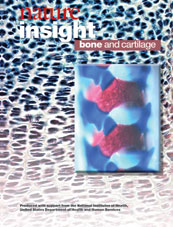
Bone and cartilage
Vol. 423, No. 6937 (15 May 2003)
Produced with support from National Institutes of Health
The skeleton is a finely patterned structure that provides mobility, protection of vital organs, and housing of the bone marrow. This collection of articles explores some key elements of skeletal biology, including how skeletal structures are patterned and bones and cartilage develop, the influence of genetics over human skeletal biology, the signalling pathways and transcription factors that control bone mass, and the pathogenic mechanisms of rheumatoid arthritis.
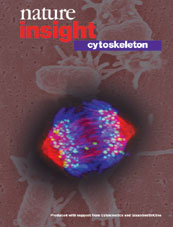
Cytoskeleton
Vol. 422, No. 6933 (17 April 2003)
Produced with support from Cytokinetics and GlaxoSmithKline
The cytoskeleton of eukaryotic cells pervades the cytoplasm. As well as establishing cell and tissue shape, cytoskeletal proteins influence many cellular functions, including cell migration, movement of organelles and cell division. Topics covered by this collection of reviews include the basic principles of filament organization, the operation of motor proteins and the role of the cytoskeleton in key biological processes.
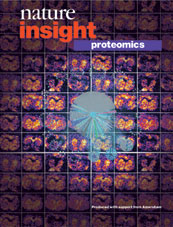
Proteomics
Vol. 422, No. 6928 (13 March 2003)
Produced with support from Amersham Biosciences
The term proteome defines the entire protein complement in a given cell, tissue or organism. In its wider sense, proteomics research also assesses protein activities, modifications and localization, and interactions of proteins in complexes. Proteomics promises to transform biological and medical research, and this Insight reviews the progress made in this technology-driven enterprise and looks at future challenges and both basic and clinical applications.
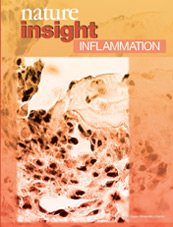
Inflammation
Vol. 420, No. 6917 (19/26 December 2002)
Produced with support from AstraZeneca
Inflammation is a local, protective response to microbial invasion or injury. Although usually a healing response, in some cases inflammation proceeds to a chronic state associated with debilitating diseases such as arthritis, multiple sclerosis and cancer. This collection of articles explores how the inflammatory response is set in motion, how it is controlled, and the possibilities for therapeutic intervention.
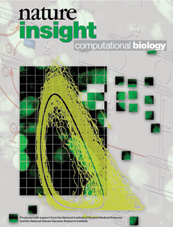
Computational biology
Vol. 420, No. 6912 (14 November 2002)
Produced with support from NIGMS and NHGRI
The unifying strand that runs through this collection of reviews is computation, whether it be the production of sophisticated models against which reality is compared, or the subtle analyses that derive patterns and trends from vast and noisy data sets. To make sense of this wealth of data will require sensibilities more normally associated with mathematicians and engineers.

Climate and water
Vol. 419, No. 6903 (12 September 2002)
Water in its various forms has always worked as a great amplifier of changes imposed on the climate system. It acts both as the Earth's central heating system and as the refrigerator, and how these processes will evolve in a changing climate is as important a question as it is difficult. The articles in this Insight explore some of the interactions between climate and the hydrologic cycle in the past, present and future.

Food and the future
Vol. 418, No. 6898 (8 August 2002)
Produced with support from Syngenta
With global population projected to reach nine billion by 2050, new ways must be found to increase agricultural yields while preserving natural habitats and biodiversity. The decisions we make now about food will affect our descendants for millennia to come, and this collection of articles highlights the importance of planning for a sustainable future.
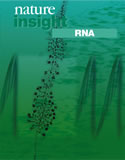
RNA
Vol. 418, No. 6894 (11 July 2002)
Although RNA is very similar to DNA in chemical terms, it provides a striking contrast in its structural plasticity and versatility. This Insight reviews the many facets of RNA chemistry and biology, including its role in the evolution of life and in ribosome structure and function, the catalytic properties of RNA enzymes, RNA-based gene regulation, and progress towards using RNA molecules as therapeutic agents.
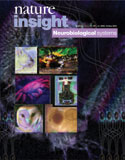
Neurobiological systems
Vol. 417, No. 6886 (16 May 2002)
Produced with support from the National Institutes of Health
Nervous systems come in all shapes and sizes, and have evolved to match the needs of specific organisms. Non-mammalian neuroscience offers a host of preparations with interesting behaviours and neural circuitry. The reviews in this Insight sample the advantages of several of these experimental preparations in elucidating general neural principles.

Ultracold matter
Vol. 416, No. 6877 (14 March 2002)
New types of physical behaviour occur under unimaginably cold conditions, and modern laser-cooling technologies enable scientists to probe the quantum world of condensates. We review the latest research into ultracold matter and find that coherent matter waves as well as individual ultracold atoms and ions are extremely attractive for both theoretical and practical studies.
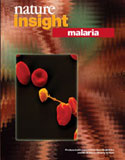
Malaria
Vol. 415, No. 6872 (7 February 2002)
Produced with support from GlaxoSmithKline and Medicines for Malaria Venture
Malaria is a disease of poverty. Drug-resistant parasite strains, insecticide resistance in mosquitoes, environmental changes and increased population are contributing to its resurgence. But growing international awareness and funding is leading to new control efforts. This Insight describes the latest research developments, likely future progress and the practical impact that the new knowledge will have.
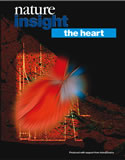
The heart
Vol. 415, No. 6868 (10 January 2002)
Produced with support from AstraZeneca
Heart disease is the world's leading cause of death, with smoking, fat-laden diets and sedentary lifestyles all detrimental to a healthy heart. But the heart is one of the most widely studied organs of the body, and a greater understanding of the processes involved at the molecular and genetic level is enabling us to make inroads in preventing and treating heart disease.
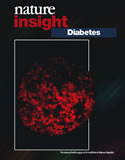
Diabetes
Vol. 414, No. 6865 (13 December 2001)
Produced with support from Bristol-Myers Squibb
Diabetes is predicted to double in incidence in the next two decades, fuelled predominantly by modern lifestyles and an increasing incidence of obesity. Leading researchers discuss the spectrum of disorders that comprise diabetes, the biochemical causes of the complications that arise, and the best ways to treat and prevent this complex and potentially debilitating condition.
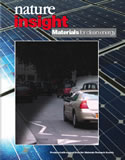
Materials for clean energy
Vol. 414, No. 6861 (15 November 2001)
Produced with support from the Materials Research Society
Limited energy resources and increasing environmental pollution are driving the development of flexible technological solutions that involve alternative means of energy supply and storage. This Insight illustrates how the search for cleaner, cheaper, smaller and more efficient energy technologies has been driven by developments in materials science and engineering.
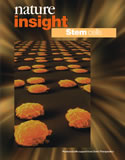
Stem cells
Vol. 414, No. 6859 (1 November 2001)
Produced with support from Osiris Therapeutics
Stem cell research has been transformed by successes achieved in culturing human embryonic stem cells, the building blocks for every tissue we comprise, and in manipulating their differentiation in vitro. The challenge is now on to bring stem cell therapies to the clinic. Here, top researchers cut through the hype and explain the fundamentals of stem cell biology as they see it today.
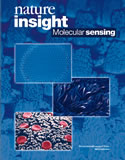
Molecular sensing
Vol. 413, No. 6852 (13 September 2001)
Produced with support from NIH Institutes
The transduction of environmental stimuli, such as odour, light and sound, into a cellular response is the first, crucial step in sensory processing. Many molecules involved in the different transduction pathways have been identified in the past few years. And as this collection of reviews shows, although our senses encode a vast diversity of signals, similarities in transduction mechanisms are common.
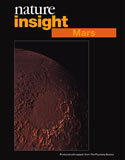
Mars
Vol. 412, No. 6843 (12 July 2001)
Produced with support from Mars Planetary Societ
Much of our fascination with Mars relates to the possibility that liquid water exists at or near the martian surface, and therefore that life may have taken hold or even exists there today. A series of interrelated reviews describes the evolution of this most Earth-like of the planets in our Solar System, from the differentiation and solidification of the martian core to the dynamics of its atmosphere.

Plant defence
Vol. 411, No. 6839 (14 June 2001)
Produced with support from AstraZeneca
Natural selection has honed the defence strategies of plants over 1.6 billion years. Besides exciting practical applications such as engineering disease resistance, a theme that emerges throughout this Insight is how molecules and mechanisms involved in plant defence have direct homologues in animals. But plant defence strategies have evolved in directions and to levels of sophistication not seen in animals.
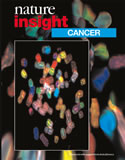
Cancer
Vol. 411, No. 6835 (17 May 2001)
Produced with support from AstraZeneca
Cancer is an umbrella term covering a plethora of conditions characterized by unscheduled and uncontrolled cellular proliferation. Almost any mammalian organ and cell type can succumb to oncogenic transformation, giving rise to a bewildering array of clinical outcomes. In this Insight, nine articles illustrate how diverse and dynamic cancer research is at the start of the 21st century.
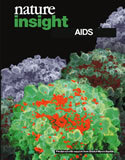
AIDS
Vol. 410, No. 6831 (19 April 2001)
Produced with support from Bristol-Myers Squibb
The scale of the HIV epidemic is far greater than was predicted a decade ago. Around 36 million people are living with HIV, 20 million have already died, and 16,000 new infections occur daily. Here we examine the biology of the virus and the disease it causes, give an overview on the status of the AIDS pandemic, and review the efforts underway to control and curb it.

Complex systems
Vol. 410, No. 6825 (8 March 2001)
Many systems show complex dynamical behaviour. Although in its infancy, the study of complex systems has seen tremendous growth in recent years, and emerging concepts are now influencing disciplines as disparate as astronomy and biology, physics and finance. The richness of the field and diversity of its application are reviewed in this Insight.

Astrobiology
Vol. 409, No. 6823 (22 February 2001)
Astrobiology — the study of life in the Universe — encompasses fields as diverse as geology, astronomy, evolutionary and developmental biology, human physiology and palaeontology. Although many ventures labelled as astrobiology are perhaps some way from the usual stuff of science, this eclectic selection of articles shows how invigorating it can be to consider life in its broadest sense.
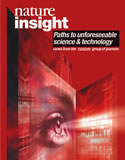
Paths to unforeseeable science and technology
Vol. 409, No. 6818 (18 January 2001)
Science's unpredictability has not prevented a group of invited scientists from being farsighted about future possibilities in fundamental research and its applications. Anticipation is one thing, vision quite another. Geneticists and others are relishing the prospect of the maps and inventories that are to come, and the inevitable insights into organismal development and function, relationships between species and between kingdoms, and the evolutionary past. But where's the new vision? And what sorts of visions are driving other parts of biology and other sciences towards new discoveries and technologies?

Biocatalysis
Vol. 409, No. 6817 (11 January 2001)
Produced with support from Novozymes A/S
Enzyme biocatalysts carry out the chemistry of life with almost unerring specificity and high catalytic efficiency. This Insight surveys the vast diversity of enzymes at the chemist's disposal, how enzymes can become practical tools for the organic chemist, the development of new functions in nonaqueous solvents, techniques for 'breeding' new enzymes, and the successes and challenges of using biocatalysts on a commercial scale.
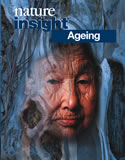
Ageing
Vol. 408, No. 6809 (9 November 2000)
Much of human culture has been shaped by the inevitability of our ageing and death. But why do we age, when fairly similar creatures apparently do not? Individual reviewers discuss ageing from an evolutionary standpoint, the role played by oxidative damage, development of age-related cancers and ageing syndromes, and future prospects for research on ageing.
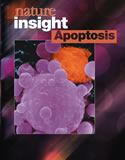
Apoptosis
Vol. 407, No. 6805 (12 October 2000)
Programmed cell death, or apoptosis, is an essential part of life for any multicellular organism. But it must be tightly regulated as too little or too much cell death may lead to pathology. The hunt is on to understand which cells die when, why and how, and leading researchers here review the latest developments in this rapidly moving field.
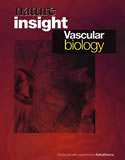
Vascular biology
Vol. 407, No. 6801 (14 September 2000)
Produced with support from AstraZeneca
Cardiovascular diseases are on the increase in both developed and developing countries and are a major cause of mortality worldwide. This collection of reviews reveals the current research developments that are relevant to understanding the complex nature of vascular biology, highlighting the recent advances in the treatment not only of pulmonary vascular diseases but also diabetes and tumour development.

The future of micro-electronics
Vol. 406, No. 6799 (31 August 2000)
Since the invention of the integrated circuit in 1959, the semiconductor industry has improved the productivity of such circuits by 25-30% annually. This Insight focuses on some of the most pressing technological and fundamental problems that are — or will be — faced by the semiconductor industry if it is to continue to satisfy consumer demand for speed and computational power.
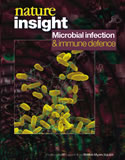
Microbial infection and immune defence
Vol. 406, No. 6797 (17 August 2000)
Produced with support from Bristol-Myers Squibb
Despite the extensive use of antibiotics and vaccination programmes, infectious diseases remain a leading cause of illness worldwide, resulting in more than 13 million deaths each year. These reviews examine how bacteria attack and survive in the host, the mechanisms that the host uses to defend itself, and the therapeutic strategies that can be used to buttress these defences.
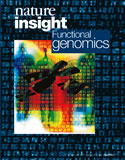
Functional genomics
Vol. 405, No. 6788 (15 June 2000)
Produced with support from Aventis
The past decade has witnessed astounding technological advances in genome sequencing. The next step in this biological revolution — 'functional genomics' — is the subject of this Nature Insight. Functional genomics is not simply the assignation of function to identified genes, but the organization and control of genetic pathways that make up cells and organisms. Leading figures in genomics assess here the challenges arising from the avalanche of sequence data.

Biodiversity
Vol. 405, No. 6783 (11 May 2000)
Produced with support from Center for Applied Biodiversity Science
The Earth's biodiversity — the sum total of all biotic variation from the level of genes to ecosystems — is being lost at an unprecedented rate. This broad-ranging collection of reviews focuses on the science of biodiversity, covering the underlying concepts, pure and applied research, and biodiversity loss from the human perspective.

Obesity
Vol. 404, No. 6778 (6 Apr 2000)
Produced with support from The Roche Group
Today, there are as many people in the world who are affected by obesity and its related health problems as there are suffering from hunger. This collection of reviews investigates this complex disease from its basic epidemiology through to the molecular mechanisms for regulation and possible treatment strategies that are being developed.
